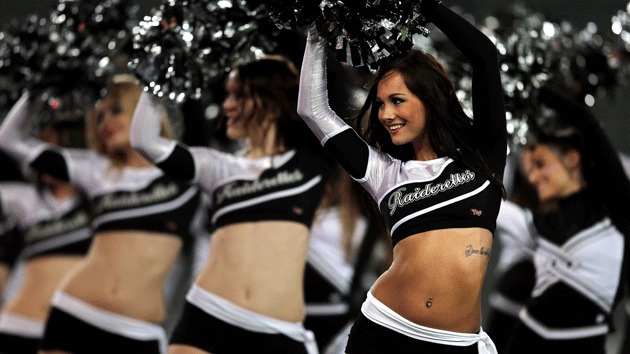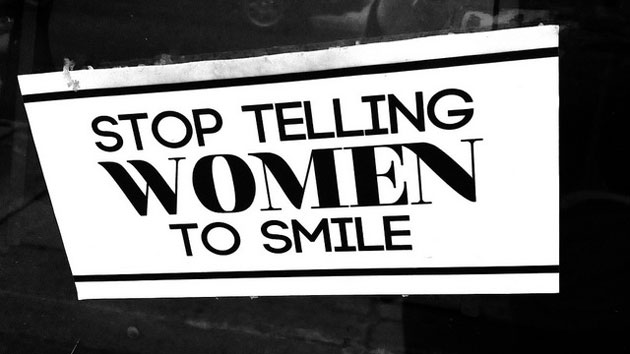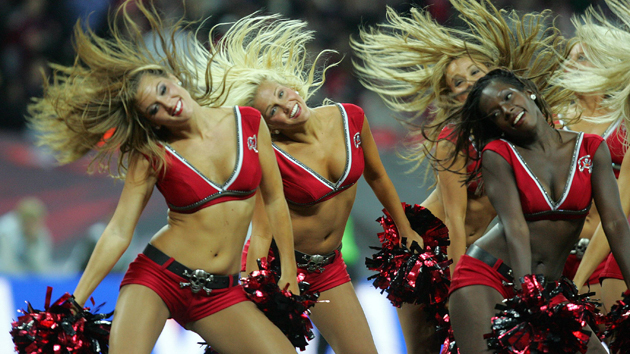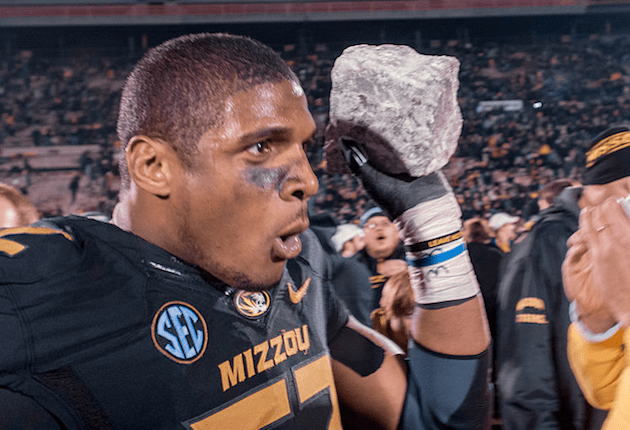
Imago/ZUMA
Update: On September 4, 2014, the Oakland Raiders agreed to pay $1.25 million to settle the class-action lawsuit brought by former cheerleader Lacy T. The team will pay an average of $6,000 per season to each Raiderette who worked from 2010 to 2012, and $2,500 to Raiderettes who worked the 2013-14 season. According to a joint statement, “The settlement will resolve disputed claims regarding payment for hours worked, including practices and appearances, expenses, interest, and penalties under the California Labor Code.” Lacy told the LA Times, “I feel a sense of satisfaction knowing this long journey is over and will end happily for 90 women…I know we’re just cheerleaders to people, but we’re low-wage workers working for a billion-dollar industry.”
In January, an Oakland Raiders cheerleader named Lacy T. filed a class-action lawsuit against the team with a laundry list of embarrassing allegations: Raiderettes were paid well below minimum wage, fined for things like forgetting to bring their pom-poms to practice or gaining five pounds, prohibited from talking to the press about their working conditions, and required to pay hundreds or thousands of dollars out of pocket for hair appointments, tanning sessions, and other beauty supplies. Similar lawsuits quickly followed from four other NFL cheer squads: the Ben-Gals (Cincinnati Bengals), the Flight Crew (New York Jets), the Jills (Buffalo Bills), and the Tampa Bay Buccaneers’ cheerleaders. (Read Mother Jones‘ roundup of NFL cheerleaders’ allegations here.)
But last week, the Raiderettes had a small but real victory: In audition flyers that have since been taken off the team’s website, the Raiders stated that this year’s cheerleaders will earn $9 per hour, California’s minimum wage. This makes the Raiders the first of the sued NFL teams to give their cheerleaders a raise. Furthermore, Caitlin Y., a cheerleader waging a separate class-action lawsuit against the Raiders, was invited back to the team after auditions this past weekend, making her the first active cheerleader to have spoken openly to the press against the team’s working conditions.
The battle isn’t over yet for the Raiderettes: Arbitration in mid-July will address other allegations from the January lawsuit, like the requirement that cheerleaders pay out of pocket for beauty expenses, and will discuss the potential for veterans to receive back pay to make up for lost wages. The lawsuit that Caitlin Y. and teammate Jenny C. filed against both the Raiders and the NFL is still under way. In addition to claims about low pay, it alleges that cheerleaders are ridiculed for the size of their breasts, called “Oompa Loompas” if their skin is too tan, and routinely required to work events where they are subject to the inappropriate comments and groping hands of drunken fans.
Notably, this degrading treatment echoes claims made in other squads’ lawsuits: Buffalo Bills cheerleaders allege that they are subject to routine “jiggle tests” to make sure that their stomachs and thighs aren’t too bouncy, and that at the team’s annual golf tournament the bikini-clad cheerleaders are dunked into pools of water and “auctioned off” to the highest bidder.
The cheerleaders have a long road ahead, but, just maybe, a pay raise for the Raiderettes could be the first step toward NFL teams treating their cheerleaders with some semblance of dignity. If professional cheerleaders can’t keep their hopes up, who can?














